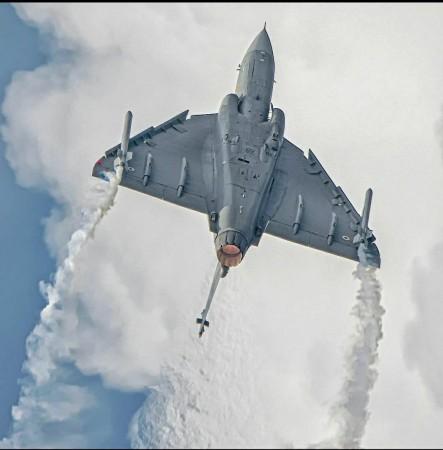
The Defence Research and Development Organisation (DRDO) has made a significant stride towards self-reliance in aerospace technology. The organisation has successfully conducted high-altitude trials of the indigenous Integrated Life Support System (ILSS) for LCA Tejas. The ILSS, an On-Board Oxygen Generating System (OBOGS), is a cutting-edge system designed to generate and regulate breathable oxygen for pilots during flight. This development eliminates the dependence on traditional liquid oxygen cylinder-based systems, marking a significant shift in the Indian aerospace sector.
The ILSS is a product of the collaborative efforts of the DRDO and Indian defence industries, reflecting the strength of India's domestic defence capabilities. The system, which boasts 90 per cent indigenous content, is a testament to India's commitment to self-reliance in aerospace technology. The ILSS can also be adapted for use in MiG-29K and other aircraft with appropriate modifications, further demonstrating its versatility and potential for widespread application.
The high-altitude trials of the ILSS were conducted by the Defence Bio-Engineering and Electro Medical Laboratory (DEBEL), a Bengaluru-based lab under the DRDO, on March 4. The ILSS underwent rigorous testing on the LCA-Prototype Vehicle-3 aircraft of Hindustan Aeronautics Limited (HAL)/ Aeronautical Development Agency (ADA). The system met stringent aeromedical standards in varied flight conditions, including altitudes of up to 50,000 feet above mean sea level and high-G maneuvers.

The ILSS's performance evaluations covered critical aspects such as oxygen concentration, demand breathing, availability of 100 per cent oxygen, aerobatic maneuvers at required altitudes for full functional testing of Anti – G Valve. Breathing Oxygen System (BOS) on during taxiing, take off, cruise, G turns and rejoin approach and landing. Following flight clearance from the Centre for Military Airworthiness and Certification (CEMILAC), the system successfully met all specified parameters. Beyond OBOGS, the ILSS integrates 10 Line Replaceable Units, including the Low-Pressure Breathing Regulator, BOS, Emergency Oxygen System, Oxygen Sensor, Anti-G valve, and other advanced components.
This achievement is the result of the collaborative efforts of DEBEL, ADA, HAL, CEMILAC, the National Flight Test Center, Directorate General of Aeronautical Quality Assurance, and the Indian Air Force (IAF). Defence Minister Rajnath Singh has congratulated DRDO, Indian Air Force, industry partners and Public Sector Undertakings on this achievement. He emphasised that this development reinforces India's commitment to cutting-edge defence technologies and aligns with the vision of 'Viksit Bharat 2047'.
Chairman DRDO Dr Samir V. Kamat also lauded the DRDO team, the IAF, and industry partners for their contributions to the successful high-altitude trial of the Indigenous ILSS for LCA Tejas. This development is reminiscent of the historical event when the Indian Air Force (IAF) successfully test-fired the indigenously developed Beyond Visual Range Air-to-Air Missile (BVRAAM) 'Astra' from a Su-30 aircraft. The successful test of the Astra missile marked a significant milestone in the indigenous weapon capabilities of the country.















